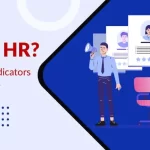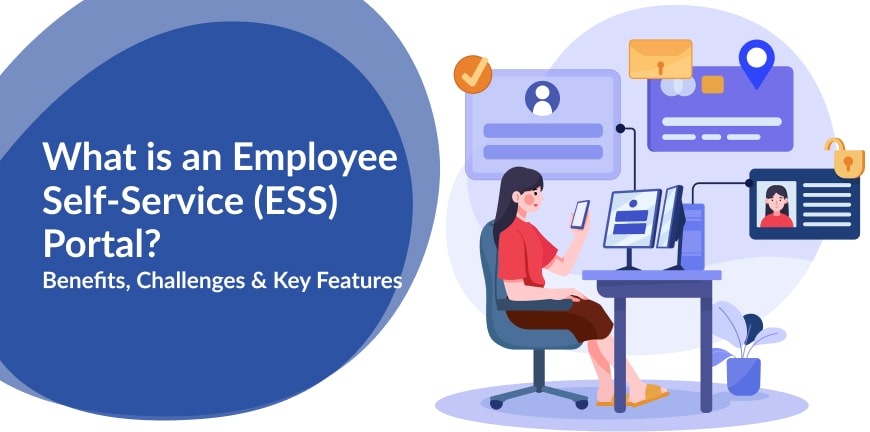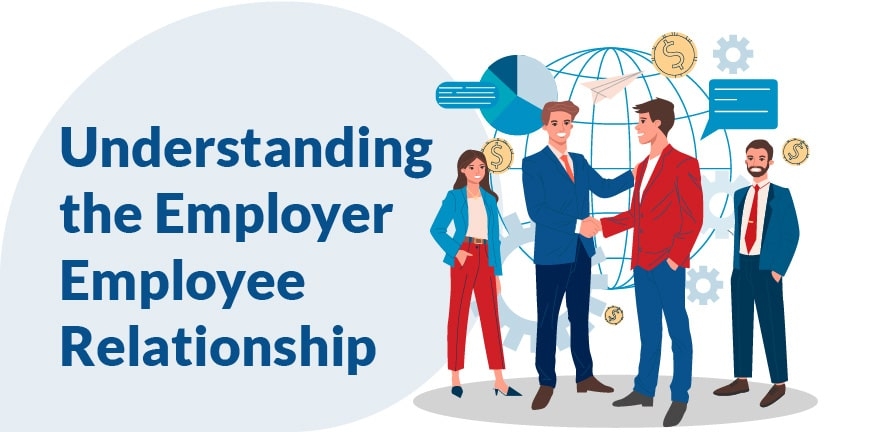
What Is Critical Talent? Definition, Benefits, Characteristics
20/02/2025
What are KPIs in HR? Top 10 Key Indicators with Examples
24/02/2025- What is the definition of Employee Self-Service (ESS)?
- What is the difference between ESS, HRMS, and MSS?
- Top 5 Benefits of ESS Portals for Employees
- What Are Employee Self-Service Benefits?
- What Are the Challenges of Implementing Employee Self-Service?
- What Features do ESS systems have?
- How can businesses improve their ESS capabilities?
- How to Choose an ESS Portal?
- Real-World Example: How ESS Simplifies Payroll & Leave Management
- Future of Employee Self-Service: AI, Chatbots & Automation
- Frequently Asked Questions (FAQs)
Employee self-service is not a novelty in HR. It is a requirement for organizations of all sizes, be they small, mid-sized, or even large global entities. Engineering a self-service support portal is not very easy, which is why many organizations depend on HR consulting companies to manage their employee self-service needs.
What is the definition of Employee Self-Service (ESS)?
An Employee Self-Service (ESS) Portal is an online platform that allows employees to access and manage their personal, payroll, and HR-related information—such as payslips, leave requests, attendance, and tax details—without needing HR assistance. It enhances efficiency, transparency, and employee engagement within an organization.
It reduces their dependence on HR and gives the whole employee management process more transparency. HR is also free to do other business-critical tasks, without compromising on employee engagement.
What is the difference between ESS, HRMS, and MSS?
ESS (Employee Self-Service), HRMS (Human Resources Management System), and MSS (Manager Self-Service) are all HR related concepts but with different functions.
1. ESS (Employee Self-Service)
Definition: It is a feature in HRMS that allows employees to access and update their personal information as and when required. This could be their contact details, view payslips, and submit leave requests through a mobile portal.
2. MSS (Manager Self-Service)
Definition- This is another feature in the HRMS that helps managers oversee and approve HR activities that they have come up with for their teams, like leave approvals, tracking attendance, recruiting, and managing tasks. The MSS helps streamline HR tasks and improve the workflow.
3. HRMS
Definition: HRMS is a software or platform that helps bring together all core HR functions like payroll, recruitment, performance management, attendance compliance, ESS, and MSS all into one digital solution. It helps manage all HR operations in one place.
Top 5 Benefits of ESS Portals for Employees
1. Instant access to personal and HR information
Employees can view, manage, and update their details, download payslips, check attendance, access benefits, and review documents at any point in time without HR’s intervention.
2. Easier leave and expense management
With ESS portals, employees can easily apply for leave, request reimbursement if any, check their leave balances, and keep track of approval statuses, and help with faster HR interactions.
3. Enhanced data accuracy
Employee can update their details, whether it’s contact details, tax information, or any other, reducing errors from manual data entry by HR.
4. Empowerment and improved satisfaction
Employees have access to their information and the processes of HR. This creates a sense of accountability and helps increase job satisfaction.
5. Faster communication
If there are any announcements, changes in policies, or important reminders, the ESS portal sends notifications immediately. This ensures employees don’t miss out on important updates.
What Are Employee Self-Service Benefits?
The benefits of employee self-service are justified by the ease of implementing and maintaining an ESS portal. Employee self-services are important for both employees and the employer.
1. Reduces the Total Cost of HR
This is a significant benefit. By introducing employee self-service, companies can reduce the number of people on the HR team.
2. Improves the Employee Engagement
The employees can manage their personal information by themselves, apply for and manage their leaves, and track their attendance, contributing to a sense of trust.
3. Increases the NPS
Employees now trust the organization more, so they begin to recommend the organization as a great place to work, and the net promoter score (NPS) increases.
4. Reduces the Administrative Burden of HR
The HR process is becoming more streamlined. This reduces the burden on the HR team, and they can focus more on workforce management and employee appreciation.
5. Improves the Accuracy and Speed of HR Processes
The accuracy of the HR processes connected with employees improves, and the fulfillment of any requests also happens a lot faster.
What Are the Challenges of Implementing Employee Self-Service?
The challenges that companies face when they are trying to implement an employee self-service system are many. Some of these challenges are:
1. Inadequate Training
Employees are not given sufficient training in how to access the employee self-service system and manage their details properly.
2. Lack of Buy-in from Leadership
Sometimes, HR leaders in a company may not be willing to take the necessary steps towards building an ESS from the ground up or even finding a ready-made solution.
3. Concerns About Employee Data Security
This is another big challenge when it comes to implementing ESS. Employee data needs to be kept private and secure, and sometimes employees may not fully trust the company.
4. Need for Significant Investment Upfront
An ESS is typically part of an HRMS, and buying a full-fledged HRMS may be a difficult task for a small or mid-sized company.
5. Will Take Time to Implement
It takes significant time to select the right platform, customize it to one’s needs, and then deploy it effectively. Initially, the employee database must be migrated too.
What Features do ESS systems have?
ESS systems generally have features that are aimed at employee self-service support. Some of the features of an ESS are:
1. Modify and Add Employee Information
Employee data with edit permissions can be modified by the employee. They can add additional field information as and when requested by HR.
2. Apply for Leave and Work from Home
Employees can apply for leave (both paid and unpaid) through the ESS portal. They can also apply for work from home with the manager’s permission.
3. Manage Attendance Effectively
Employees can track their attendance and ensure that the timesheets are maintained accurately so that it doesn’t affect the salary credited later.
4. Upload Tax-related Documentation
Tax filing also happens through the ESS portal. Employees can select which regime they want to proceed with and submit relevant proofs to avail themselves of any benefits.
5. View HR Policy Documentation
HR policy documents are uploaded on the ESS portal, and the employees are free to view them whenever they want. Some examples are dress code policy, work-from-home policy, etc.
How can businesses improve their ESS capabilities?
Businesses can improve their ESS capabilities by not building the solution in-house. When you pick an HRMS partner and go with their solution, then it becomes a lot easier to manage the ESS portal too. This is because the third-party ESS portal/HRMS partner will be knowledgeable on how to maintain the portal in a better manner, how employees can benefit most from it, and what HR needs to do to enable them to do so.
How to Choose an ESS Portal?
Selecting an ESS portal is not easy. You must find one that can streamline your HR workflow and provide the benefits to employees that you generally provide through HR activities. You must also decide what features you want the ESS portal to have. While having a performance management system built into ESS can be great, how much is it adding to the cost, and will you be using it within the ESS in your company?
These are some of the questions that you will need to ask. I want a partner who can help you along the way. opt for Alp Consulting’s ESS services and let us set them up for your business in such a way that your employees will be happy and content. Talk to us today and let us help you!
Real-World Example: How ESS Simplifies Payroll & Leave Management
A Client faced a lot of challenges processing payroll accurately and managing leave requests. Manual payroll calculations led to errors and delays, while paper-based leave applications were confusing, slow, and lacked transparency.
ESS Implementation:
By deploying an integrated ESS portal, employees gained direct access to their payroll information and leave management tools. The portal provided:
- Real-Time Payslip Access: Employees could view and download their monthly payslips anytime, reducing payroll queries to HR.
- Automated Leave Requests: Workers submitted leave applications online, with automated routing to managers for approval.
- Instant Leave Balance: Employees checked their leave entitlements and balances independently, eliminating guesswork.
- Transparent Approval Process: Managers reviewed and approved leave requests efficiently via the portal, ensuring prompt decisions.
- Error Reduction: Automated payroll calculations minimized human errors and discrepancies.
Outcomes:
| Benefit | Result & Impact |
| Payroll Accuracy | 30% reduction in payroll errors |
| Employee Queries | 40% fewer payroll-related HR helpdesk tickets |
| Leave Management Efficiency | 50% faster leave approval workflow |
| Employee Autonomy | Increased satisfaction with self-service options |
| HR Operational Load | 35% reduced administrative time on payroll/leave |
Future of Employee Self-Service: AI, Chatbots & Automation
| Aspect | Future Trends and Benefits |
| User Engagement | More interactive, conversational, and personalized portals |
| Efficiency | Reduced HR workload, faster data processing, and approvals |
| Employee Experience | Enhanced access, more intuitive interfaces, and self-guided support |
| Data Insights | AI analytics for better workforce planning and decision-making |
| Security & Compliance | Advanced AI for continuous monitoring and compliance enforcement |
Frequently Asked Questions (FAQs)
1. What type of company benefits most from ESS portals?
Companies of all sizes and across industries can benefit from ESS portals. This is because they meet the basic needs of the employees in a very simple manner, and it is the core activities of HR that they help speed up.
2. How secure are ESS portals for handling employee data?
Today, ESS portals are very secure and store employee data with strong encryption. They ensure that user access and access levels are monitored as well, ensuring the safety and privacy of employee data.
3. How does an ESS portal improve payroll accuracy?
Employees can directly enter their addresses, and through integration with the attendance tracking software, their timesheets can be auto-updated. Tax details can also be entered by employees, further improving the accuracy of payroll.
4. What are the costs associated with implementing an ESS portal?
The costs associated with implementing an ESS portal are initial setup costs, continuous maintenance costs, the costs of training the employees, and the costs of hiring people to manage the HRMS within the HR team.
5. What self-service resources can employers make available to employees?
The self-service resources that employers can make available to employees are attendance tracking, leave management, HR policy documentation, and the capability to add details related to taxes.
6. What is ESS, and how does it work?
ESS is a self-service portal that allows employees to perform HR tasks like viewing pay stubs, applying for leave, and modifying their personal information. An employee generally accesses the ESS portal with a username and password and has access to certain aspects of it depending on the level of the employee.
Contact Us For Business Enquiry

Rajkumar Shanmugam
Rajkumar Shanmugam is the Head of HR at ALP Consulting, bringing over 19 years of comprehensive HR leadership experience across India and international markets. His expertise spans talent acquisition, employee relations, performance management, compliance, and HR transformation. Rajkumar has a proven track record of driving people-centric initiatives, enhancing workplace culture, and aligning HR strategy with business goals. With extensive experience in US staffing operations and global mobility, he continues to lead organizational excellence through innovation and employee engagement.




